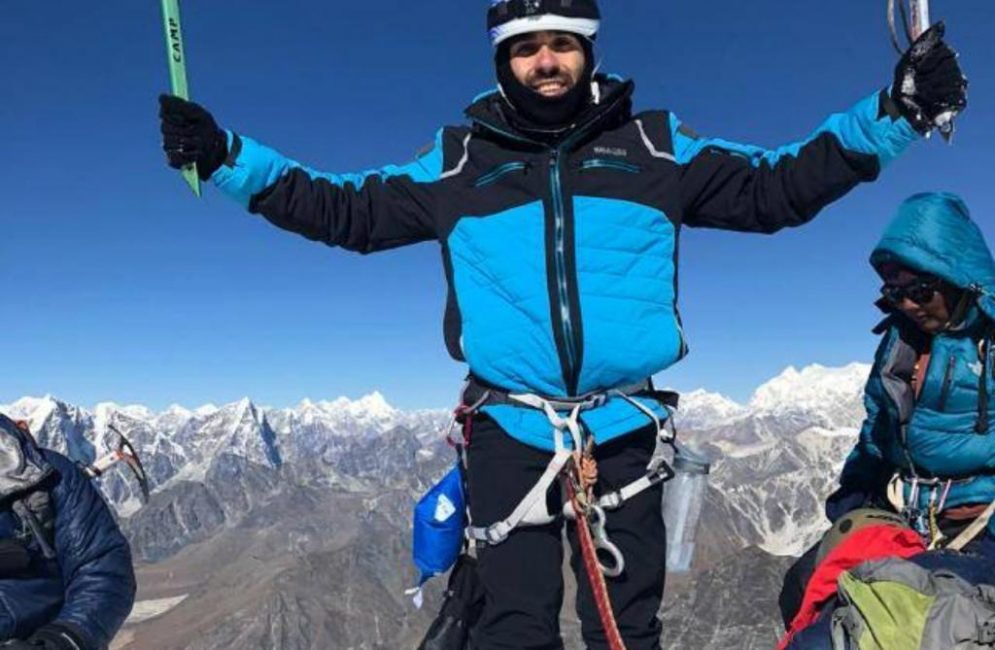
Introduction
If you are looking for a challenging trip in the Everest region. Island Peak climbing, a 17 days long strenuous Imja Tse mountaineering experience, caters just that. Imja Tse, popularly known as Island Peak, stands above 20,000 ft (6189 m). Imja Tse falls in the region of Sagarmatha National Park. The peak’s name is apt, for it stands surrounded by a sea of glaciers. The moraines cascade down from seven to eight-thousands.
Consequently, slippery slopes, deep crevices, and narrow edges fill the peak. It pumps up the adrenaline. Hence, experienced trekkers are required for the climb.
Trip Highlights
- Island Peak Climbing is like a stepping stone for more prominent summits. The hard climb allows trekkers to prepare for higher mountains.
- Beautiful Tengboche monastery with experience of other Sherpas culture.
- Mt. Everest, Lhotse, Nuptse, and Ama Dablam loom above all as prominent views.
- The base camps offer a full glance at the Nuptse Wall that leads to Lhotse (fourth highest peak).
Overview of the Island Peak Climbing
Island Peak Climbing begins with a simple city tour in Kathmandu. The preparation for the climb follows quickly. The actual trek starts from Lukla to Phakding village. Meanwhile, Phakding leads to the famous Namche Bazaar. Travelers seeking to explore the Everest region overwhelm the town. The town buzzes with great joy of locals as well as foreigners. The trek follows through Tengboche and Dingboche. Both the areas are incredible viewpoints to watch the Everest. Chhukung, on the other hand, leads to the Island peak base camp.
Moreover, the base camp offers to get accustomed to the altitude. The base camp is the gate to the summit likewise. Finally, reaching a summit and explores the beauty of the Himalayan range. After that, the trail goes downward to Chhukung again. Leisure day at the base camp offers immense time to explore the surrounding.
Conclusion
Therefore, reach the summit of Island Peak Climbing brings ecstatic joy to the climber. At last, The peak offers a great addition of experience for climbers. The best time to do Island peak climbing is from Mid- September to November and March to May.
Detail Itinerary
Day 01: Arrival day in Kathmandu.
Island Peak Climbing commences upon your arrival in Kathmandu City. One of our representatives will be waiting for you outside the airport. He’ll transfer you to the hotel. Stay in the best hotels in Kathmandu. After refreshment, you can visit us at our office to discuss the trip in detail. You will also meet your Sherpa guide, who will assess your climbing equipment and gear. You can visit the local trek shop to buy or rent climbing gear and equipment — overnight in Kathmandu.
Day 02: Kathmandu city tour and climbing preparation
Indulge in a full-day sightseeing tour of the historical Kathmandu City. An experienced tour guide will take you on the trip of some of the most famous UNESCO World Heritage Sites. Out of seven UNESCO designated sites in the city, you'll get to visit four most popular sites.
The tour begins with a visit to a hill-top, Stupa, Swayambhunath. The ancient stupa offers a panoramic view of the entire city. Then, you'll drive towards Kathmandu Durbar Square and visit the ancient Malla-Palace, now turned into a museum. Witness the remarkable temples, monuments, and statues before heading towards Pashupatinath Temple. The largest Hindu temple in the country sees flocks of local and international pilgrims. Witness the grandeur of the ancient Shiva Temple. At the last visit to Boudhanath Stupa, located in the crowded town of Boudha. It is the largest spherical stupa in the country. You'll witness hundreds of local Buddhist pilgrims making a Kora or circumambulation of the shrine. Overnight in Kathmandu.
Day 03: Kathmandu to Lukla flight and trek to Phakding Village
You’ll wake up rather early today. We will pick you up and drive you to the airport. The early morning flight will take you to Lukla. The 25minutes short flight offers the beautiful aerial view of the forested valleys, rivers, and villages. Upon arrival in Lukla, you will have your breakfast and embark on the first day of the trek. The trail goes past scenic Sherpa settlements. Walkthrough the well-paved stone steps towards Phakding village. Walk past a beautiful waterfall and lush forests. The trail continues along the Dudh Koshi River and ends at Phakding village. It will only be a few hours of trek.
Day 04: Phakding to Namche.
Continue along the main Everest trail and trek through the lush forests towards Monjo village. Monjo marks the entrance to the UNESCO designated site of Sagarmatha National Park. After showing your permits, you’ll continue along the forested path and cross few suspension bridges before arriving at a steep trail. Begin climbing through the stone steps to reach Namche Bazaar. The largest village in the entire Everest region, Namche boasts of many high-end lodges (teahouses), shops, and restaurants. It serves as the primary hub for tourists leaving for different parts of the Everest region. Overnight in a comfortable teahouse.
Day 05: Namche Bazar Rest day
Wake up to the beautiful view of Kongde Ri Peak (6187m) and enjoy a lavish breakfast. It is an acclimatization day; hence you'll spend the day exploring the village and outer valleys. Embark on a tour of Namche Bazaar and explore the beautiful nooks and corner of the village. From here, you'll begin climbing uphill towards Khumjung Village that lies about 45-50 minutes from Namche Bazaar. Khumjung is home to Khumjung Monastery, which has been a tourist landmark for ages. You will witness the purported Yeti scalp and paw preserved inside a glass box inside the monastery. Yeti is a mythical abominable snowman who inhabits the Himalayas. Make a short hike towards Hillary School, the largest school in the entire region, before retracing your path back to Namche Bazaar.
Day 06: Namche to Tengboche
Leaving Namche, the trail begins to rise through the stone-steps towards the Everest Memorial Site. You will walk past the Everest Viewpoint that offers the first sight of Mount Everest. Continue climbing along the Dudh Koshi River to arrive at Phungi Thanga. Enjoy a warm lunch before continuing with the trek. Then, you'll climb through some uneven paths. The trail takes you to Tengboche Monastery, located at the altitude of 3,860 meters. In the distance, you will witness the natural sight of Ama Dablam Peak (6812m).
Day 07: Tengboche to Dingboche
Visit the century-old Tengboche Monastery and meet the local monks. The monastery hosts the annual festival of Mani Rimdu that runs for 19 consecutive days. The locals and tourists only get to witness the last three days of the festival. After breakfast, you'll embark on a trek and climb towards Debuche Village, a quaint Sherpa settlement. From here, the trail descends towards the Imja Khola (River). Cross the bridge and begin trekking towards Pangboche. Enjoy a warm lunch at Pangboche, and continue along the path. You will witness thousands of decorated Mani Stones en route to Dingboche. These Mani stones depict the history of Tibetan-Buddhism. Overnight in Dingboche.
Day 08: Dingboche Rest Day.
As you’re above 4,000 meters, you can take a day off and acclimatize at Dingboche Village. You can choose to stay put in the village or take an adventurous hike to the nearby Nangkartshang peak. Nangkartshang (5083m) is a small peak located 2-3hr away from Dingboche. This can prove to be a steep climb. However, from the top of the summit, you can enjoy the panoramic view of the mountains like Tawache, Ama Dablam, Island Peak, Lhotse, Mount Everest, and Pumori. You can also embark on a short hike outside Dingboche.
Day 09: Dingboche to Chhukung.
Leaving Dingboche, you’ll embark on a rather easy trail towards Chhukung village. Chhukung serves as the final stop before you head towards Island Peak. You will find many climbers staying put at Chhukung village. The uphill trail goes along Chhukung Glacier into the Chhukung valley. The quaint Sherpa settlement of Chhukung lies below the massive Chhukung Peak. You can rent climbing gear or equipment at Chhukung. Spend the rest of the day acclimatizing.
Day 10: Chhukung to Island peak Base Camp
Chhukung village lies at an altitude of 4,725 meters. After breakfast, you'll leave Chhukung and begin heading through the moraines towards Island Peak Base Camp. Continue trekking along Chhukung Glacier and take a steep ascent that leads towards Lhotse Glacier. After almost 4hr into the trek, you'll arrive at the vacant elevated ridge that serves as the base camp. Spend the rest of the day acclimatizing. Overnight inside a tented camp.
Day 11: Climbing to Island Peak summit and Trek to Chhukung
The day you most awaited for is here. Today, you’ll conquer the Island Peak. The day begins at around 2 am. You’ll get up and have your breakfast. Prepare your gears and embark on the climb of the summit. Walk past snow and few crevasses before arriving at the right side of the gully. A steep climb through the use of fixed rope will bring you to the ridge.
Follow your guide and begin climbing the steep trail along a ridgeline towards the exposed traverse. The use of ice-ax and crampons will come handy. Begin climbing the snout of the summit using the fixed rope. The last section is very steep. Once at the top, you can relax and enjoy the beautiful sights of Mount Everest, Lhotse, and Makalu. After a brief rest, you'll retrace your path and begin climbing down to Island Peak Base Camp. From here, we will walk down to the nearby Chhukung village.
Day 12: Leaser day in Island peak Base Camp
We have kept a contingency day in hand in case we fail to Summit the peak because of bad weather. We’ll use this day to make a successful summit of Island Peak. Overnight inside a camp.
Day 13: Chhukung to Namche.
Retrace your path and begin climbing down from Chhukung valley. Walk past Chhukung Glacier as you make your way towards Dudh Koshi Valley. A short trek will take you past Dingboche and Tengboche Village en route to Namche. Leaving Dingboche, you’ll cross the Khumbu Khola and Imja Khola to reach Debuche. A short downhill hike through the birch and oak forest will bring you to Tengboche. Enjoy a warm lunch before continuing towards Namche. The trail goes along the Dudh Koshi River towards Phungi Thanga. A short descent along the stone-steps will bring you back to Namche Bazaar. Enjoy the magnificent sight of Kongde Ri Peak in the distance.
Day 14: Namche to Lukla.
Retrace the usual path and begin trekking down to Monjo village. The trail goes through few suspension bridges and lush forests towards Monjo. Exit Sagarmatha National Park and continue traveling towards Phakding. Enjoy a warm lunch before climbing 11km down to Lukla. The last section of the trail is rather easy. Spend the evening celebrating the completion of the climb with your Sherpa guide and staff.
Day 15: Lukla to Kathmandu flight
Catch an early morning flight back to Kathmandu. If the weather is clear, you'll get on the flight at around 6 am, or 7 am. Catch the majestic sights of snowcapped peaks and lush green hills. As you approach Kathmandu, you will witness the magnificent views of some of the UNESCO World Heritage Sites, such as Boudhanath and Swayambhunath. Drive to your hotel and enjoy a warm breakfast — overnight in Kathmandu.
Day 16: Rest day/Shopping in Kathmandu
A leisure day, you can choose to do whatever you like. You can embark on a city tour and explore some of the unvisited UNESCO sites, or you can relax at the hotel. You will find many massage centers at Thamel if you want to relieve the body pain. In the meantime, you can indulge in a shopping spree at Thamel. Overnight in Kathmandu.
Day 17: Airport Departure.
Today, we will drop you the airport as your flight schedule.
Cost Information
Cost Includes
- Domestic and International airport pickups and drops.
- Kathmandu to Lukla both way flight tickets.
- 4 night Kathmandu hotel with Breakfast.
- All meals (Breakfast/Lunch/Dinner) every day.
- All-mountain Accommodation Tea houses and Camping.
- Sagarmatha National fee and local permit cost.
- English speaking, trained, and experienced trekking and climbing Sherpa Guide.
- All insurance for guide/porter.
- Guide and Porter costs including their salary, equipment, transportation, food, and tea house.
- Island Peak Climbing Permit and Garbage deposit.
- Group Climbing equipment (like ropes, Ice-Screw, snow bar….)
- Your personal climbing equipment like Plastic boots, Harness, helmet, Ice ax, etc
- Welcome dinner.
- First AID and Medical Kit.
- International Airport drops and pickups.
- All Government and Local taxes.
Cost Excludes
- Your personal Travel Insurance.
- Hot and cold drinks.
- Lunch and Dinner in Kathmandu.
- Entrance fee of Kathmandu City tour.
- Personal Expenses (Laundry Service, Phone Calls, Battery Charge, Bar bills, Hot Shower Boiled water, etc.)
- Personal Porter 20 USD per day.
- Tips for Guide.
Equipment
For Head
- Sun hat / Scar
- Sunglasses and Headlight
For Upper Body
- Water Proof Jacket
- Down Jacket / Warm Jacket
- Light Weight T-shirt (At least 1 pair)
For Lower Body
- Water Proof Pants
- Running tights
- Light Weight Pant
For Hand
- Gloves
For Feet
- Thin Inner socks (At least 2 pairs)
- Woolen socks
- Trekking boots (preferred comfortable boots)
Other Assecories
- Sleeping bag
- Water bottle etc
- Suncream
- Water purification tablets
- Toiletries (Toilet paper etc)
- Warm hat
- Trekking Bag Etc.
Other Climbing equipment (Included)
- Harness
- Ascender/Descender
- Crampons
- Snow bar
- Rope
- Ice ax
- Plastic boot
- Carabineers
- Helmet etc.
Frequently Asked Questions About Island Peak Climbing
01: How difficult (technical) Island peak Climbing?
Island Peak Climbing grading listed as ‘PD +’ means Per Difficule adding with plus, the systems used are from popular French and Swiss Alpine Climbing Classification. Per Difficult or PD + grade describes as a straight-forward climb to the summit top, with some technical difficulty to tackle, all climbing members requires proper climbing equipment to cope with the climb and hardship in some section of the climb. The climbs lead over moraine-ice and snow where goof crampons necessary and ice ax for the climb and safe descend.
Using fix and main ropes some section on route to the summit of Island Peak the other native name for the peak is Imja Tse Himal as it is located in the midst of Imja Tse Valley.
02: How many nights stay in a tent during Island peak Climbing?
One of a great climb to Island Peak using lodge for overnights only for one or two nights on camping, on leaving the last settlement at Chhukung, camping begins for overnight right from Island Peak base camp.
03: Do I need climbing experience for Island Peak Climbing?
Not necessarily, but it will add to your advantage and skill making it much easier if you have done some basic course on climbing/mountaineering. As long you are physically fit and in sound medical health, you can climb with the aid of our expert guide to reach on the top and safely back, at base camp we have time for pre-training exercise before the actual climb.
04: What types of equipment/gears do I need for Island peak Climbing?
We have listed on our home page where you follow the list of climbing equipment that includes plastic boots and good ice-ax. For more information feel free to contact us, all your climbing equipment is included in our package.
05: can I do alone Island peak Climbing without guide/porters?
All Trekking Peaks above 6,000 m or below, where you must join with proper organization and booking with local Government Registrated Company, where White Hill Adventure provides you expert guide and porters includes some trekking/camping staff. Climbing alone is not accepted as per the rules of the country and Mountaineering Association.

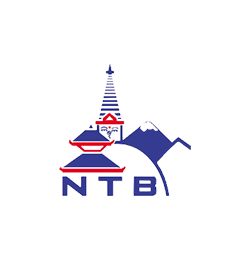
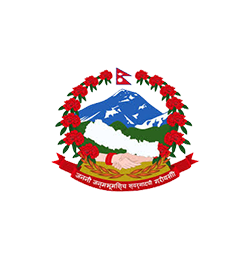
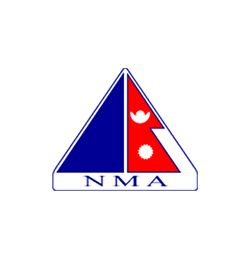
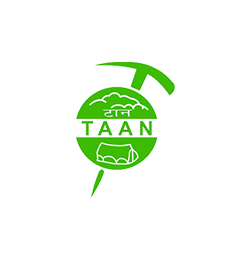


Island peak climbing
Wow! Great experience with our guide Dawa. He managed very well everthing during our climbing peried. The weather was clear. Mountain views are perfect.
Not so many peoples. We started 3:00 am from High Camp. We summited Island at 9:00 am. I have lifetime experience. On the top, we see breathing taking viws of Everest, Amadablem and many others mountain.
We hiked up to Everest Base Camp.
Thank you white hill adventure tea for us great andventure experience!
Justin.